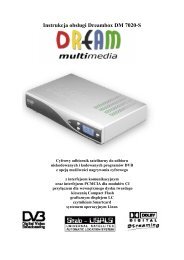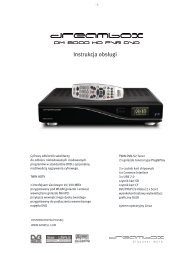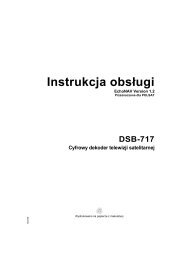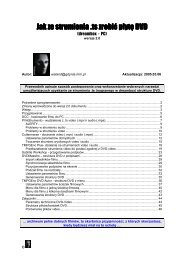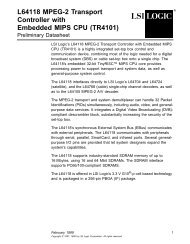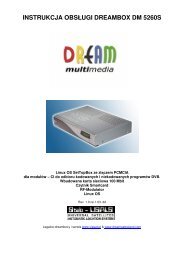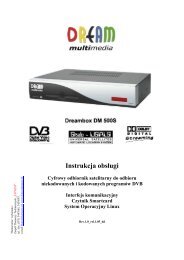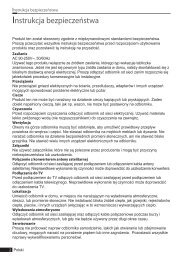You also want an ePaper? Increase the reach of your titles
YUMPU automatically turns print PDFs into web optimized ePapers that Google loves.
TS5, <strong>BCT</strong>-<strong>1510</strong>, <strong>BCT</strong>-<strong>1520</strong>,<br />
<strong>BCT</strong>-<strong>1530</strong><br />
•Pin Function (1/3)<br />
POWER<br />
54<br />
NAME PIN TYPE DESCRIPTION<br />
GND 1 I System ground<br />
VDD 16 I Power supply input, 5 V ±10% (73K324BL). Bypass with 0.1<br />
and 22 µF capacitors to GND.<br />
VREF 31 O An internally generated reference voltage. Bypass with 0.1 µF<br />
capacitor to ground.<br />
ISET 28 I Chip current reference. Sets bias current for op-amps. The<br />
chip current is set by connecting this pin to VDD through a<br />
2 MΩ resistor. ISET should be bypassed to GND with a<br />
0.1 µF capacitor.<br />
PARALLEL MICROPROCESSOR CONTROL INTERFACE MODE<br />
ALE 13 I ADDRESS LATCH ENABLE: The falling edge of ALE latches<br />
the address on AD0-AD2 and the chip select on &6 .<br />
AD0-AD7 5-12 I/O ADDRESS/DATA BUS: These bi-directional tri-state<br />
CS 23 I<br />
multiplexed lines carry information to and from the internal<br />
registers.<br />
CHIP SELECT: A low on this pin during the falling edge of<br />
ALE allows a read cycle or a write cycle to occur. AD0-AD7<br />
will not be driven and no registers will be written if CS<br />
(latched) is not active. The state of CS is latched on the falling<br />
edge of ALE.<br />
CLK 2 O OUTPUT CLOCK: This pin is selectable under processor<br />
control to be either the crystal frequency (for use as a<br />
processor clock) or 16 times the data rate for use as a baud<br />
rate clock in DPSK modes only. The pin defaults to the crystal<br />
frequency on reset.<br />
INT 20 O INTERRUPT: This open drain output signal is used to inform<br />
the processor that a detect flag has occurred. The processor<br />
must then read the Detect Register to determine which detect<br />
triggered the interrupt. INT will stay low until the processor<br />
reads the detect register or does a full reset.<br />
RD 15 I READ: A low requests a read of the 73K324BL internal<br />
registers. Data can not be output unless both RD and the<br />
latched CS are active or low.<br />
RESET 30 I RESET: An active high signal on this pin will put the chip into<br />
an inactive state. All Control Register bits (CR0, CR1, tone)<br />
will be reset. The output of the CLK pin will be set to the<br />
crystal frequency. An internal pull-down resistor permits<br />
power-on-reset using a capacitor to VDD.




